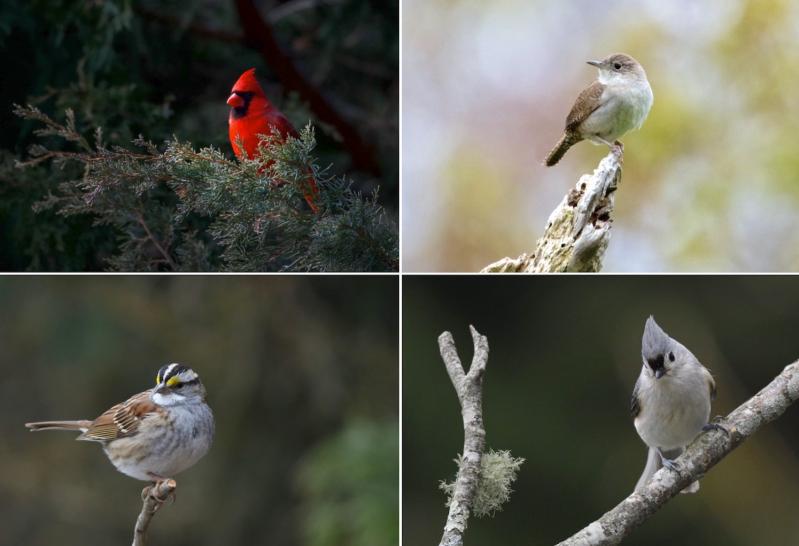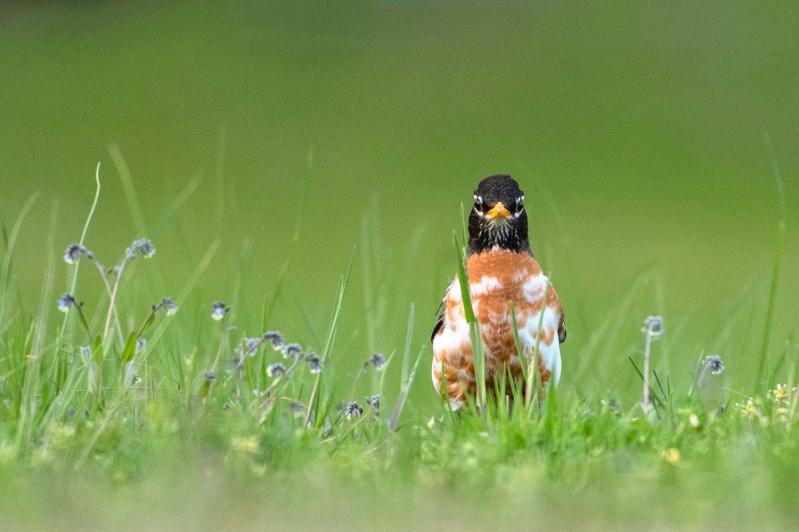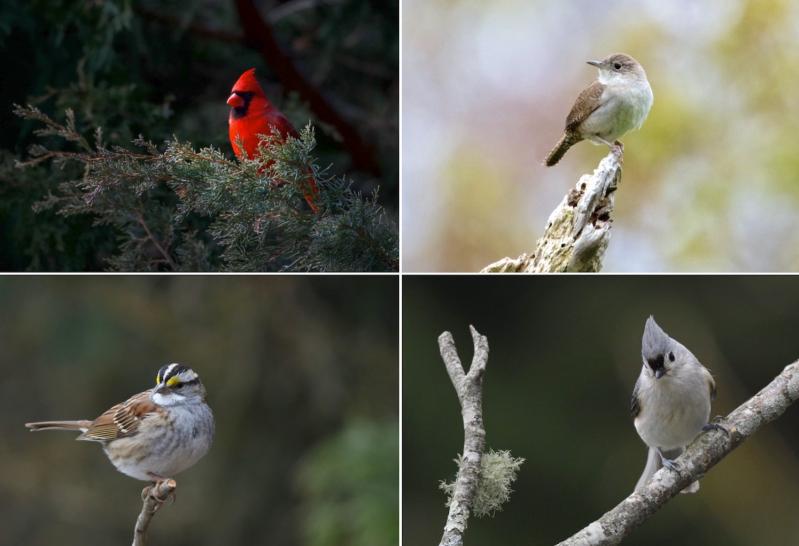The dawn song started at 4:56 a.m. Tuesday, 52 minutes before sunrise, when a gray catbird broke the silence of the night with a tentative question. He went on with soft questions and half statements, alone for a few moments before he woke a nearby cardinal. Those were the first two threads of the tapestry of birdsong that 16 minutes later was being woven by dozens, itself becoming a larger song, the song of this place.
“There’s a real sequence of when birds start to sing, so much so you can set your watch by it,” said Mike Webster, the director of the Macaulay Library at the Cornell Lab of Ornithology. The library is, among other things, a gigantic media collection of birdsongs. “Some start before it’s light out and others wait for more light.”
When I first started writing this column two and a half years ago, I encouraged everyone to think of their yard as habitat. For the next two weeks, I’m encouraging you to listen to your yard. Sleep with your windows open. Songbird migration will peak by mid-May. Mr. Webster explained that as songbirds migrate overhead during the night, they blanket the sleeping country with sound, calling to each other to keep their flocks together and tight. When they land, they sing us awake. What a gift.
“In a nutshell, birds make different kinds of sounds, and some are song. Usually, it’s the males singing to attract a mate or defend a territory, but not always, a lot of females sing too,” he said. “The birds are singing for their own purposes, but luckily for us it just sounds beautiful. It becomes more fun if you can identify the songs you hear, even if you know just two birds.”
The dawn chorus is different depending on your habitat, your location, and the time of year. The plants and trees outside my window inform what I hear both from the birds in the morning, and the insects at night. The landscape is dynamic, perhaps more so here where wealth makes anything possible. When I moved to Sag Harbor over two decades ago, it was full of deciduous trees, beech, oak, and sassafras. The beeches are now succumbing to an invasive nematode, while other native trees are being felled and replaced with nonnative evergreens.
“Basically, the birds that are well-suited to the landscape of today or 50 years ago will move out as it changes. None of our local birds are adapted to nonnative evergreens,” said Mr. Webster.

Catbirds, cardinals, robins, and now, the white-throated sparrows, sing. The white-throated sparrows won’t be here for much longer; they’ve already started flying north to mate. They’re the fourth bird joining the chorus this morning. If I may localize and throw in a shameless plug, their yearning song sounds like, “The Star-shines-for-all, shines-for-all!” It’s one of my favorites, a reminder of past summers spent in Maine.
The sun is still below the horizon when a tufted titmouse, the great whistler, sings, “Take it easy!” Not a second later, a Carolina wren insists, “GERMANY! GERMANY! GERMANY!” The two sing in duet, “Take it easy, GERMANY! GERMANY! GERMANY! Take it easy!” for the next 20 minutes, nonstop. All the while, a background layer has developed and is thickening as more birds join this morning’s song.
“There’s good evidence they want to be heard and don’t want to sing at the exact same time as some other sound. They alternate calls and go for the empty spaces,” said Mr. Webster. Thus, the tapestry is created.
At 5:25 a.m. like a speeding car trying to navigate a hairpin turn, a house wren comes skidding into the backyard sounding maniacal and unhinged. To my ear it’s not melodic or beautiful, a clatter of notes, up and down, a heckle. The house wren adds a touch of wilderness to the yard, its song asking you to tell your “mow and blow” guys to take a hike. Let the grass grow. Let nature design your yard for the next month or two of the breeding season.
The white-throated sparrows have multiplied and are singing the same song at different pitches. The tapestry now has many layers, identified by the number of Carolina wrens that can be heard simultaneously. I hear three, the farthest perhaps a football field away. A black-capped chickadee enters the fray with a simple reminder to “Be, be, be, be.”
The birds sing for other members of their species but together form a choir. That’s the dawn chorus in Sag Harbor at the end of April. In two weeks, as always, it will be slightly different. If I’m lucky, one morning the regulars will be joined by a wood thrush, a black-throated green warbler, or even a veery. They’ve all made cameos in my yard through the years, always in the next two weeks. A week ago, the house wren wasn’t here. A month ago, my dawn chorus featured dark-eyed juncos and their bells. They’re probably up in the melting ski resorts of the Northeast by now, along with the winter wrens.
My wife gets out of bed and goes down the dark stairs to prepare coffee. Two thumps mean the cats have left the bed as well, running after her for breakfast. The human day has begun, and the spell is broken.


